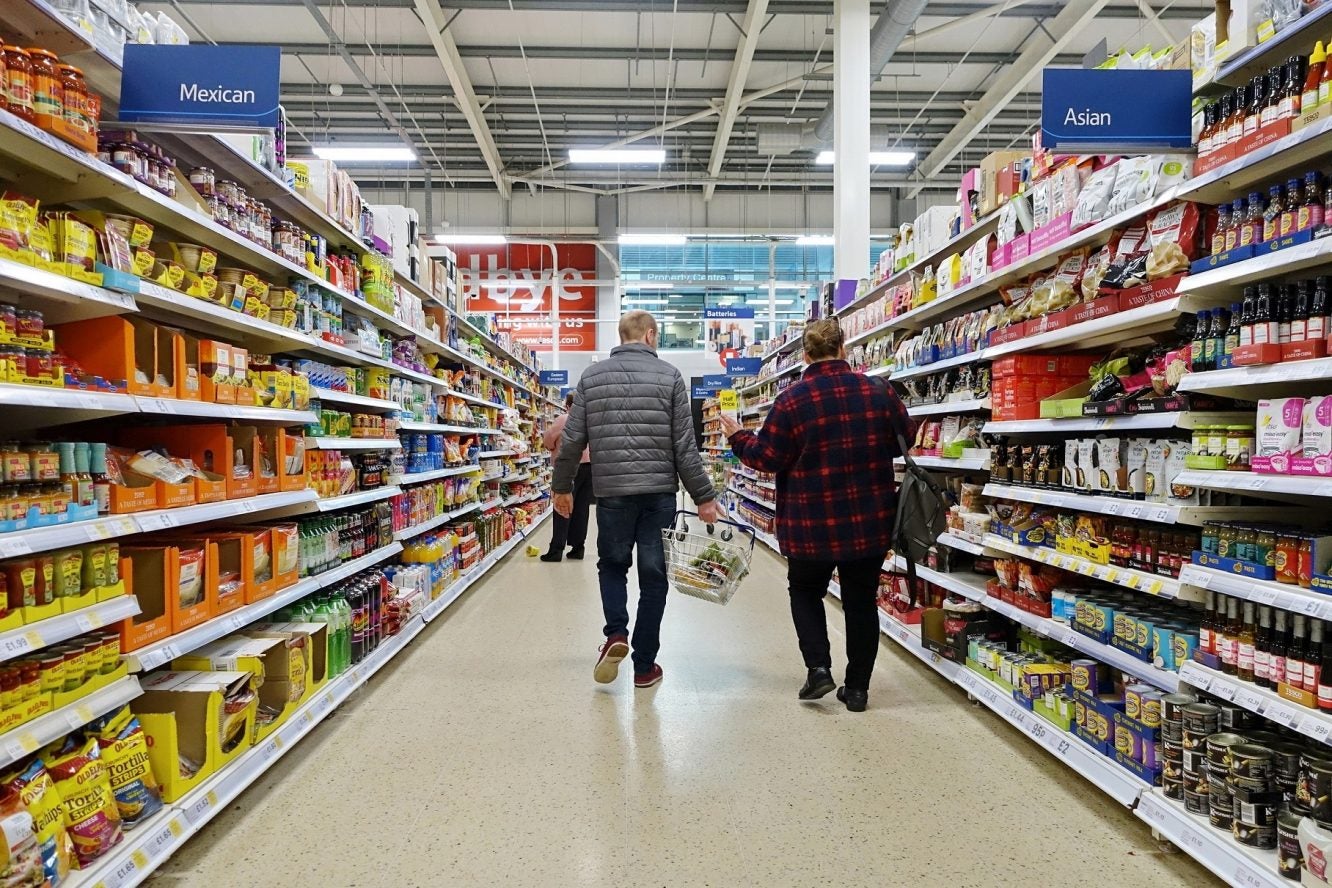
UK grocery inflation pulled back for a seventh straight month in October but failed to break through the double-digit barrier, new Office for National Statistics (ONS) figures show.
The annual rate of price increases for food and non-alcoholic beverages – for both the ONS’ CPI and CPIH measures – eased to 10.1%, the lowest level since June 2022.
Grocery CPI for food and soft drinks cooled by a full two percentage points compared to September’s rate (12.1%) and the CPIH, which includes owner occupiers’ housing costs, retreated from 12.2%.
While the pullback might be a welcome boost for UK consumers facing the added burden from the interest-rate-cycle effect on higher mortgages and rents, the ONS noted the October CPIH print was still 30% higher than it was in October 2021. That measure reached 19.2% in March, a level not seen in more than 45 years.
Karen Betts, the CEO of the UK’s Food and Drink Federation, applauded the further easing in food costs but also pointed to the pain industry manufacturers have faced as they “shield shoppers from the full impact of inflation”.
She said those efforts have “impacted manufacturing margins, which have fallen to their lowest levels in 40 years”.
Access the most comprehensive Company Profiles
on the market, powered by GlobalData. Save hours of research. Gain competitive edge.

Company Profile – free
sample
Your download email will arrive shortly
We are confident about the
unique
quality of our Company Profiles. However, we want you to make the most
beneficial
decision for your business, so we offer a free sample that you can download by
submitting the below form
By GlobalData
Betts added: “While today’s figures are good news for shoppers, they come at the same time as we are seeing a concerning drop in investment in our industry, with investment in the first half of this year more than a third lower than in the same period four years ago.”
On another sour note, the independent ONS body said food and non-alcoholic beverages were the largest contributors to the overall CPIH and CPI annual inflation rates in October. However, on a monthly basis, they were the second-largest downward contributors after housing and household services.
Grocery CPI rose 0.1% in October, compared to a 2% increase in October 2022. Despite the comparative slowdown, prices bounced back from a 0.2% drop in September, which according to the ONS’ report last month was the first decline since September 2021.
Headline inflation covering all goods also cooled in October, with the CPI reaching a two-year low and a tad less upbeat for the CPIH, which touched its lowest level since November 2021.
CPI for all goods came in at 4.6% in the 12 months through October, down from September’s 6.7% pace. The index hit a peak of 11.1% in October 2022, the highest annual inflation rate since 1981.
The ONS’ CPIH measure eased to 4.7%, from 6.3% in September, continuing a retreat from a more than 40-year high of 9.6% reached in October last year.
Nicholas Hyett, an analyst at UK-based investment services business Wealth Club, said: “At the headline level at least, these numbers are cause for celebration.
“A substantial fall in inflation should help ease the cost-of-living crisis, while a pause in interest-rate rises will be a huge relief to mortgage holders.”
Within the grocery category – food and soft drinks – the ONS said today (15 November) that nine of the 11 sub-groups provided a downward effect on annual price increases. The two others, oils and fats, and coffee, tea and cocoa, were unchanged.
Milk, cheese, eggs and vegetables helped ease the pressure on shopping costs. However, the inflation rate for milk, cheese and eggs was still 7.9% higher than 12 months earlier, albeit down from 12.3% in September.
Similarly for vegetables, which also includes crisps, the annual rate of increase was 10.8% versus 14.4% in September.

